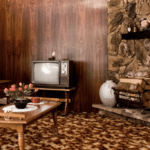
What to Consider When Buying a 1980’s Home
When we start talking about the 80’s, we think of hair bands, and episodes of Miami Vice. I don’t blame you.
Homes in this time period were not far behind that of the 90’s homes. During this time period we began to see the added space for a master suit, and opening up of floor plans that lead to what we have today.
Most of the 80’s homes will not operate with the same efficiency as modern homes do. Energy efficient appliances and advances in insulation have made strides since this time and are worth considering when purchasing an 80’s home.
Another consideration on an 80’s home is erosion. If the home is on hill or water drains from the roof without gutters, it’s almost certain the home has experience a good amount of erosion over the years. When erosion happens, it allows water to drain back towards the foundation. Excessive moisture in the soil can create structural movement through hydrostatic pressure and expanding soils.
Polybutylene piping was used for supply plumbing until the mid-90’s, and was considered the pipe of the future due to cost and ease of installation. This material was used in over 10 million homes from the mid-70’s to the mid-90’s. It’s not easily identifiable as it’s hidden behind walls and under insulation. PB pipes stopped being used after scores of allegations surfaced regarding piping failure and property damage. Although it’s not mandatory, many plumbers would recommend the replacement of this material, which can be a big out of pocket expense.
Eifs also known as synthetic stucco is a material that has been in use since the 60’s. Eifs is an acronym Exterior Insulating and Finish System. Unlike original stucco and other exterior building materials Eifs does not moisture to escape since the material does not breathe. Most issues arising from Eifs begin with bad installation allowing moisture penetration behind a material that will not allow moisture to escape. Excessive moisture can eventually lead to wood rot at the decking and framing below. Eifs can be extremely hard to identify since it has the same exterior appearance as stucco.
It’s also important to note that GFCI protection started being phased in during the 70’s, but were not located in all the current required areas of the home as today. GFCI standing for Ground Fault Circuit Interrupter is present to protect individuals from shock. Don’t put you and your family in harms way by not adding these to you wet areas such as and not limited to: kitchen, bathrooms, garage, pools, spas, exterior, wet bar, utility room, etc..
These outlets can be purchased at a reasonable price, but it’s encouraged to hire a licensed professional to prevent shock during installation.
If not changed out by now, most of the components discussed in the section homes built in the 90’s will also be close to the end of their expected life. Consider these additional cost when purchasing a home build in the 80’s along with the wear and tear age brings.
As with any age home, we recommend having a licensed professional look at the property. Not all risk can be avoided, but knowledge of your homes components can prepare you to be a home owner of this age of home.
The information provided on this website is for home education purposes only and does not reflect what is covered in a home inspection. Some issues or deficiencies may be outside the scope of practice for the home inspector or not readily identifiable. If you have any questions regarding what is covered in the home inspection, please contact us.







